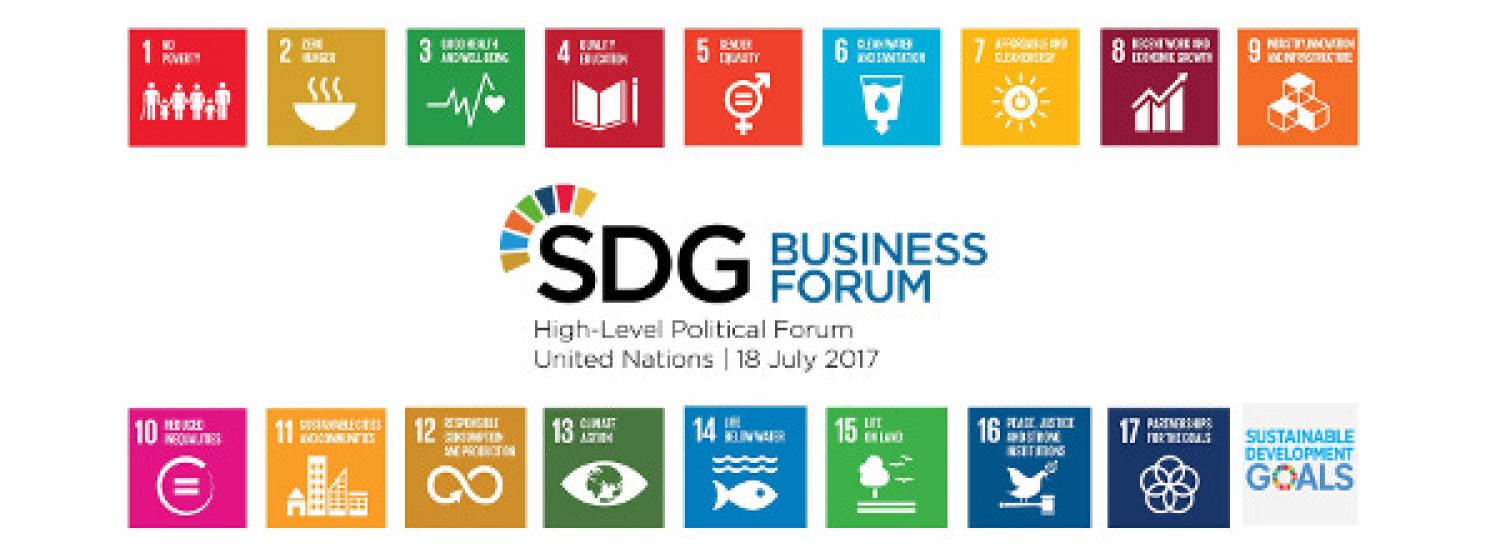
In July the 2017 Sustainable Development Goals (SDG) Business Forum recognised the critical role of business in delivering on the promise of sustainable and inclusive development. In this article, we elaborate on the SDG business case, and how businesses can engage with the SDG framework; driving business growth and productivity, whilst contributing to the better world envisaged by the 2030 Agenda for Sustainable Development.
Sustainable Development Goals provide business risks lens
The Sustainable Development Goals (SDGs) set out the UN agenda for people, planet and prosperity, achieving a prosperous, inclusive and sustainable society for all by 2030. The SDGs were adopted by 193 states at the United Nations in September 2015. The 17 goals and 169 targets aim to stimulate action in areas of critical importance to humanity and the environment.
At the Forum leading global business organisations, private sector institutions and networks, including the International Agri-Food Network and International Chamber of Commerce (ICC), published a business statement on the opportunity and importance of the SDGs:
“The SDGs provide all businesses with a new lens through which to translate the world’s needs and ambitions into business solutions. These solutions will enable companies to better manage their risks, anticipate consumer demand, build positions in growth markets, secure access to needed resources, and strengthen their supply chains, while moving the world towards a sustainable and inclusive development path.”
Why the SDGs matter according to US$50 billion company CEO
In a recent interview with Eco-Business, Unilever CEO Paul Polman shared that Unilever’s whole business model is geared towards the SDGs, and that all 300 brands they have globally are to the purpose of the SDGs. Consumer goods giant Unilever promotes and exemplifies the idea that if a company wants to be prosperous in the long-term, putting sustainability at the heart of its business model makes perfect sense.
At least US$12 trillion in business opportunities
According to a report by the Business & Sustainable Development Commission (January 2017), the SDGs could generate US$12 trillion in business savings and revenue across four sectors by 2030: energy, cities, food and agriculture, and health and well-being. It points out the 60 biggest market opportunities related to delivering the SDGs, such as sustainable aquaculture and mine rehabilitation. The report also estimates the creation of 380 million new jobs linked to these four sectors in the next ten or fifteen years due to alignment of business strategy to the SDGs.
Driver for investor and consumer behaviour
Investors are becoming more concerned with companies’ sustainability risk profiles as well understanding sustainability-related business opportunities. They have shown an interest in the SDGs and businesses proactively supporting achievement of the SDGs. For example, the Dutch financial sector backs the SDGs: 18 financial institutions, managing around EUR2900 billion in assets, are collaborating to invest in the SDGs. Two of these institutions have developed a standard methodology to identify investment opportunities linked to 13 SDGs, along with supporting other institutional investors.
Global research by PwC found that 78 percent of customers are more likely to buy the goods and services of companies that had signed up to the SDGs.
First step towards SDG alignment: assess your risks and opportunities
One of the key messages at July’s SDG Business Forum by the United Nations and International Chamber of Commerce, was that greater attention is needed to deepen the understanding of economic, social and environmental risks, in order to meaningfully address the question of how they can be mitigated and by whom.
Undertaking a comprehensive risk assessment of your business, including supply chains and third-party business relationships, will help you understand your risks and what impact your business has on each of the SDGs. It can help you to define and prioritise your plans, and to align your strategy to the SDGs to make the biggest positive difference or decrease a negative impact.
3 ways you can apply this information right now
- Request a free demo of LexisNexis Entity Insight - our newest tool for proactive supply chain and third-party risk monitoring, driven by a Political, Economic, Sociocultural, Technological, Legal and Environmental (PESTLE) analysis framework
- Visit the new online RELX SDG Resource Centre which includes articles, reports, legal practical guidance, tools, webinars and videos and events, categorised by SDG and tagged with relevant topics and region. It includes the SDG News Tracker which shows up to the minute news about the SDGs from around the world.
- Subscribe to our blog to have updates delivered directly to your inbox.
